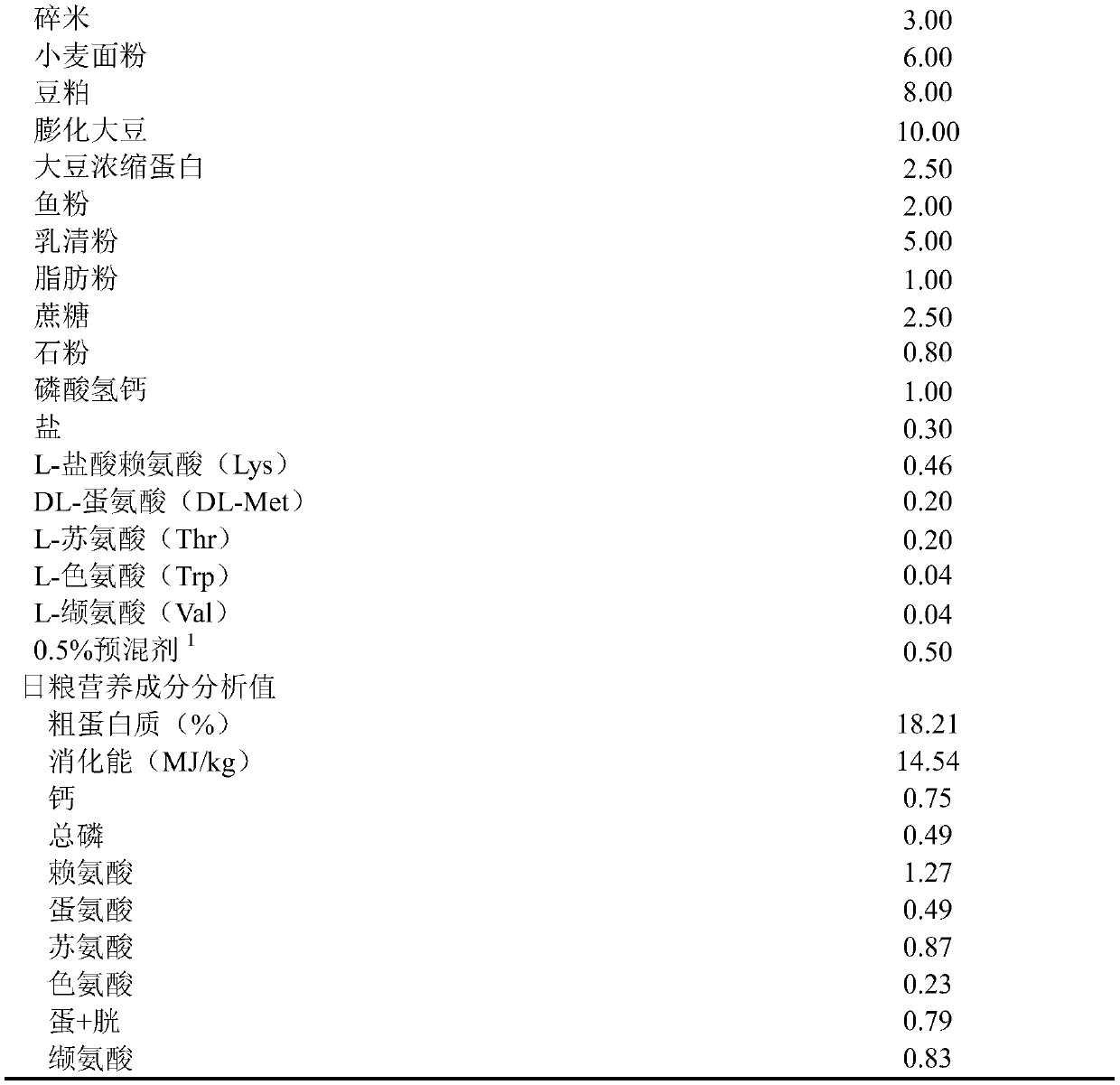Piglet enzyme bacterium feed additive and application thereof
A technology of feed additives and enzyme bacteria, which is applied in the fields of application, animal feed, animal feed, etc., can solve the problems of decreased growth performance, intestinal damage, etc., and achieve the goals of stimulating feed intake, regulating hormone secretion, and improving the structure of intestinal flora Effect
- Summary
- Abstract
- Description
- Claims
- Application Information
AI Technical Summary
Problems solved by technology
Method used
Image
Examples
Embodiment 1
[0037] Embodiment 1, the influence of different doses of enzyme bacteria feed additives on weaned piglets
[0038] 1. Experimental design
[0039] The experiment adopts a single-factor randomized block design, selects 240 three-way healthy weaned piglets with an initial body weight of 6.5kg, and randomly divides them into 4 treatments, each treatment has 6 repetitions, and each repetition (column) has 10 pigs. 28d. Amino acid and crude protein levels of dietary ingredients were determined before the experiment started.
[0040] The test groups are as follows:
[0041] Group 1 was fed with basal diet, which was the control group
[0042] The second group added 150 grams of enzyme bacteria feed additive per ton of basal diet, which was a low-dose group
[0043] The third group added 300 grams of enzyme bacteria feed additive per ton of basal diet, which was the middle dose group
[0044] The fourth group added 450 grams of enzyme feed additive per ton of basal diet, which w...
Embodiment 2
[0078] Embodiment 2, the influence of the enzyme bacteria feed additive of different composition ratio on weaned piglets
[0079] 1. Experimental design
[0080] The experiment adopted a single-factor randomized block design, and 240 triple healthy weaned piglets with an initial body weight of 6.7kg were selected and randomly divided into 4 treatments, each treatment had 6 repetitions, and each repetition (column) had 10 pigs. 28d. Amino acid and crude protein levels of dietary ingredients were determined before the experiment started.
[0081] The test groups are as follows:
[0082] Group 1 was fed with basal diet, which was the control group;
[0083] Group 2, Group 3, and Group 4 added 450 grams of enzyme feed additive per ton of basal diet, of which:
[0084] The composition and mass ratio of the second group of enzyme bacteria feed additives are: alkaline protease 30%, acid protease 30%, neutral protease 10%, tryptophan 5%, medium temperature amylase 10%, mannanase 5...
PUM
 Login to View More
Login to View More Abstract
Description
Claims
Application Information
 Login to View More
Login to View More - R&D
- Intellectual Property
- Life Sciences
- Materials
- Tech Scout
- Unparalleled Data Quality
- Higher Quality Content
- 60% Fewer Hallucinations
Browse by: Latest US Patents, China's latest patents, Technical Efficacy Thesaurus, Application Domain, Technology Topic, Popular Technical Reports.
© 2025 PatSnap. All rights reserved.Legal|Privacy policy|Modern Slavery Act Transparency Statement|Sitemap|About US| Contact US: help@patsnap.com



